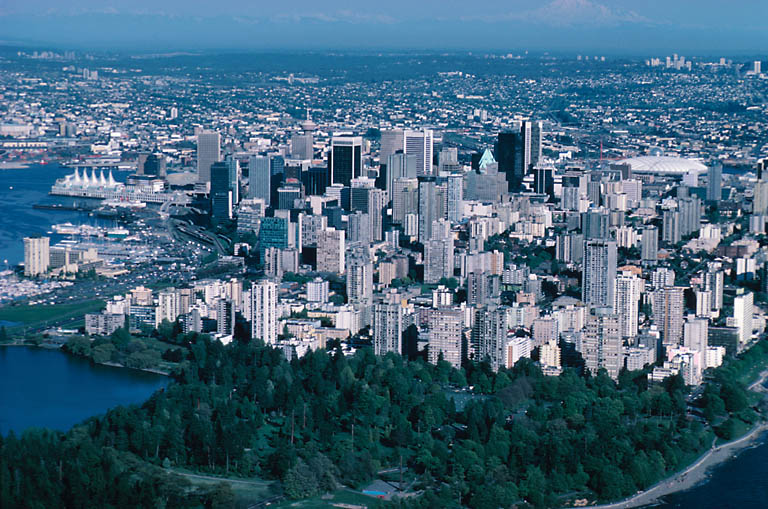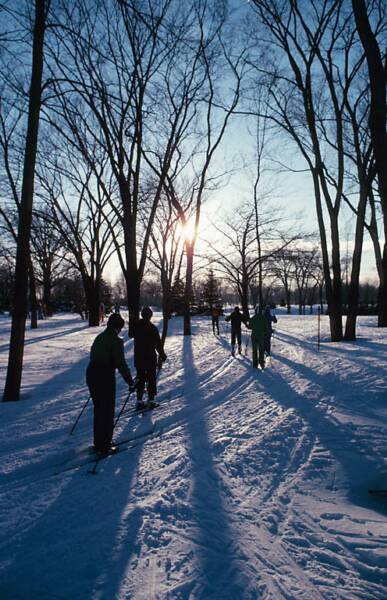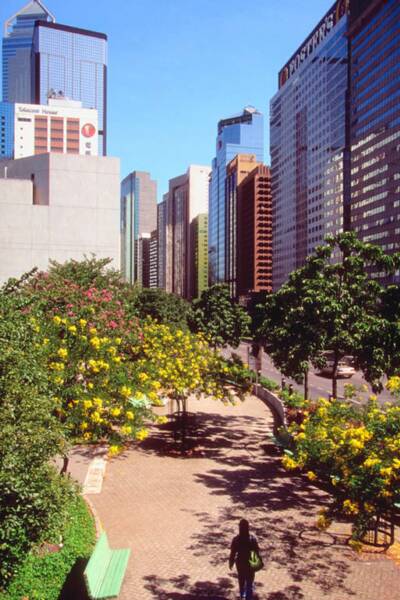Urban Forestry in Canada and the USA
source: wiki pedia
Urban forestry is the care and management of tree populations in urban settings for the purpose of improving the urban environment. Urban forestry advocates the role of trees as a critical part of the urban infrastructure. Urban foresters plant and maintain trees, support appropriate tree and forest preservation, conduct research and promote the many benefits trees provide. Urban forestry is practiced by municipal and commercial arborists, municipal and utility foresters, environmental policymakers, city planners, consultants, educators, researchers and community activists.
Benefits of urban forestry
The benefits of urban trees are many, including beautification, reduction of the urban heat island effect, reduction of stormwater runoff, reduction of air pollution, reduction of energy costs through increased shade over buildings, enhancement of property values, improved wildlife habitat, and mitigation of overall urban environmental impact.
Social, Recreational, Wildlife benefits
The presence of trees reduces stress, and trees have long been seen to benefit the health and morality of urban dwellers. The shade of trees and other urban green spaces make place for people to meet and socialize and play. Again, proper planning and community involvement are important for the positive results to be realized.
Trees provide nesting sites and food for birds and other animals. People appreciate watching, feeding, photographing, painting urban trees, and wildlife. Urban trees and wildlife help people maintain their connection with nature.
Economic benefits
The economic benefits of trees have been understood for a long time. Recently, more of these benefits are becoming quantified. Quantification of the economic benefits of trees helps justify public and private expenditures to maintain them. One of the most obvious examples of economic utility is the deciduous tree planted on the south and west of a building. The shade shelters and cools the building during the summer, but allows the sun to warm it in the winter after the leaves fall.
The USDA 'Guide" notes on page 17 that "Businesses flourish, people linger and shop longer, apartments and office space rent quicker, tenants stay longer, property values increase, new business and industry is attracted" by trees. The physical effects of trees--the shade (solar regulation), humidity control, wind control, erosion control, evaporative cooling, sound and visual screening, traffic control, pollution absorption and precipitation--all have economic benefits
Aesthetic benefits
Trees introduce colors, textures, and contrasts that soften the angular outlines and geometry of the urban landscape. Trees can frame desirable views, or block the unsightly ones. Flowers, color, bark, outlines, trunks, branch structure, provoke interest. Well-planned plantings complement architecture in defining the size and nature of outdoor spaces.
Challenges of urban forestry
Urban forestry is a practical discipline, which includes tree planting, care, and protection, and the overall management of trees as a collective resource.
The urban environment presents the arboricultural challenges of limited root and canopy space, poor soil quality, deficiency or excess of water and light, heat, pollution, mechanical and chemical damage to trees, and mitigation of tree-related hazards.
Management challenges include maintaining a tree and planting site inventory, quantifying and maximizing the benefits of trees, minimizing costs, obtaining and maintaining public support and funding, and establishing laws and policies for trees on public and on private land.
Air pollution reduction
As cities struggle to comply with air quality standards, the ways that trees can help to clean the air should not be overlooked. The most serious pollutants in the urban atmosphere are ozone, nitrogen oxides (NOx), sulfuric oxides (SOx) and particulate pollution. Ground-level ozone, or smog, is created by chemical reactions between NOx and volatile organic compounds (VOCs) in the presence of sunlight.
High temperatures increase the rate of this reaction. Vehicle emissions, emissions from industrial facilities, gasoline vapors, and chemical solvents are the major sources of NOx and VOCs.
Particulate pollution, or particulate matter (PM10 and PM25), is made up of microscopic solids or liquid droplets that can be inhaled and retained in lung tissue causing serious health problems. Most particulate pollution begins as smoke or diesel soot and can cause serious health risk to people with heart and lung diseases and irritation to healthy citizens.
Trees are an important, cost-effective solution to reducing pollution and improving the urban air quality.


